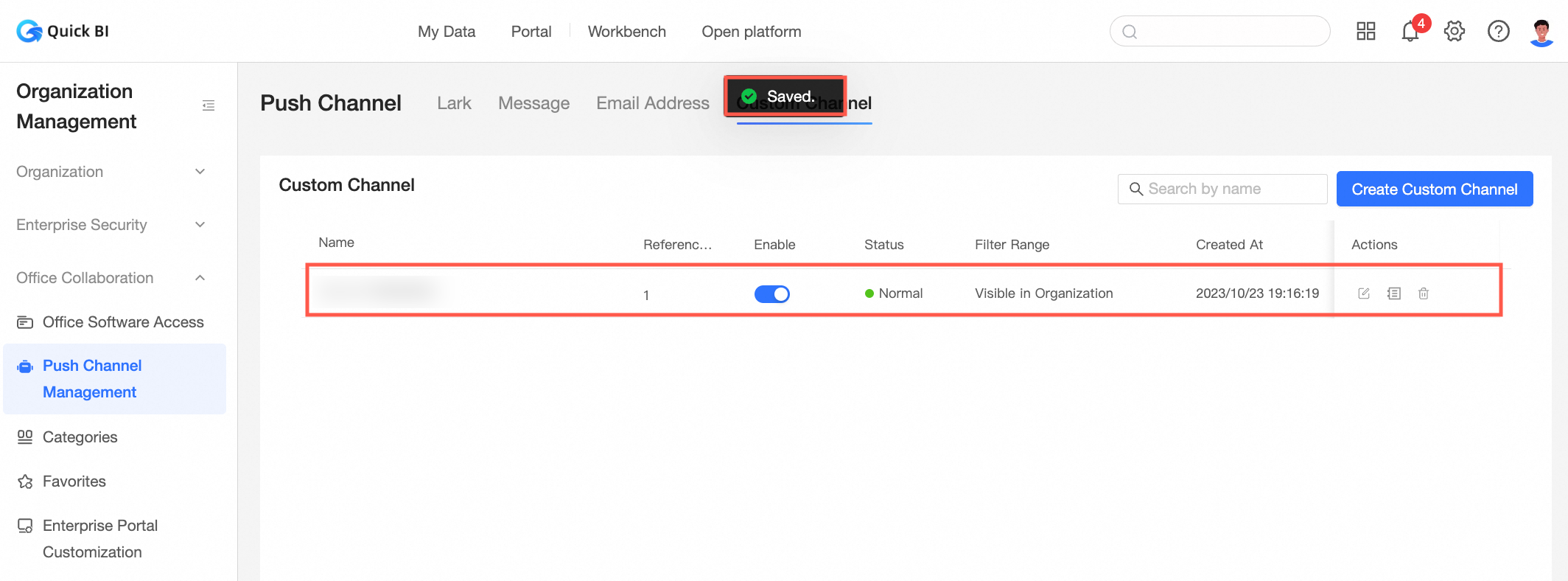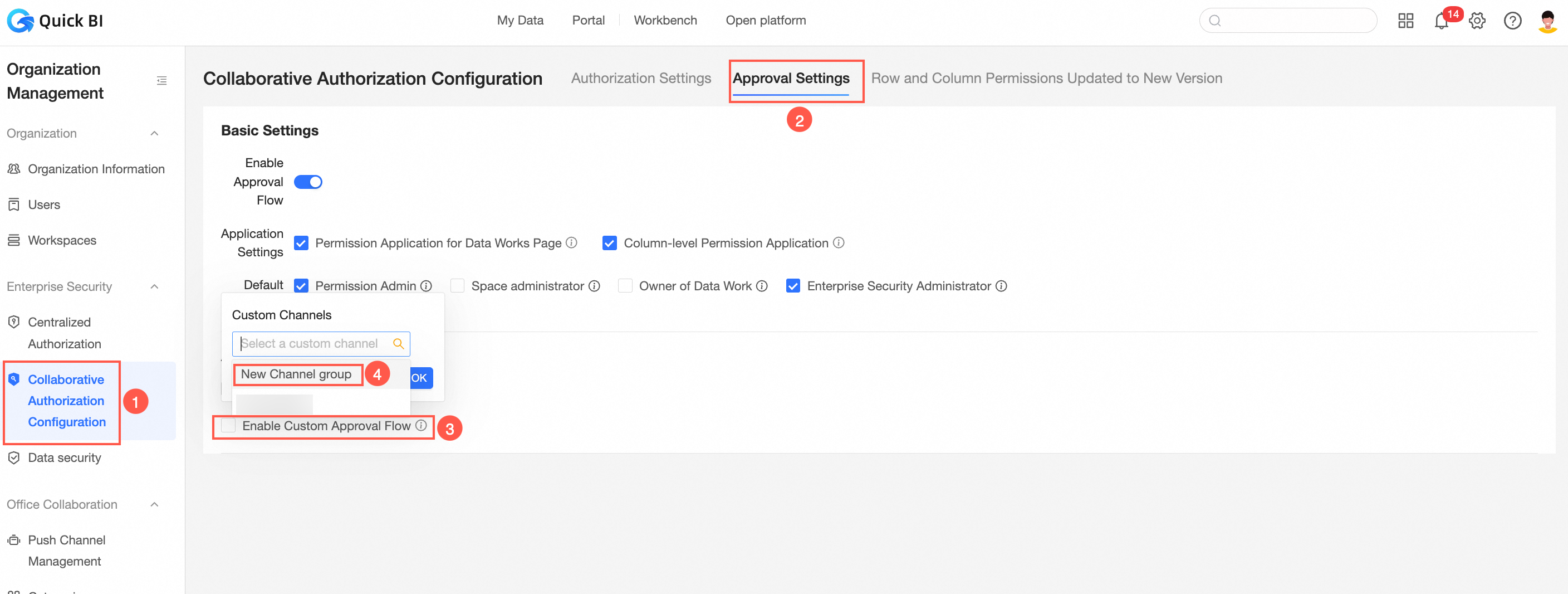Robot channels are used to manage various channels of enterprise push, which facilitates contact with enterprises. To send alerts and approval notifications to enterprises through multiple channels, Quick BI add a new channel for pushing messages. You can configure the external port for receiving messages. After you test the connectivity, push messages will be sent to the configured external port. This topic describes how to configure a custom channel.
Create a custom channel
After you log on to the
On the Quick BI product homepage, follow the instructions in the following figure to go to the Create Custom Channel page.

In the Create Custom Channel dialog box, configure the following parameters.

Parameter
Description
Parameter
Enter a custom channel name.
Push URL
Enter the API address of the custom channel to receive messages.
The specified interface address must support the
POSTrequest mode.Request to add a CMK
Enter the signature key of the custom channel to verify the request.
You can manually enter a key or click Auto Generate Key to automatically generate a key and enter it in the Quick BI.
The business party needs to verify the received content. For more information, see How to receive and verify signatures from external systems.
Click Save and Test.
After the robot channel is saved, you can view the created custom channel in the robot channel list.

Start and configure custom channels when you receive alerts
When you monitor metrics, you can add a newly created custom channel to the custom channel for configuring alert methods.
On the Quick BI homepage, follow the instructions in the following figure to go to the Metric Monitoring page.

In the Alert Settings dialog box, if you set the Alert Method parameter to Custom Channel, you can view the created custom channel in the Custom Channel section.
 For more information, see Configure monitoring and alerting.
For more information, see Configure monitoring and alerting.
Configure a custom channel in an external approval e-flow
Organization administrators can select the newly created custom channel in External Approval Channels.
On the Configuration Management page, follow the instructions in the following figure to create a custom channel.

On the Collaboration Configuration page, follow the instructions in the following figure to enable a custom approval channel.

In this case, when a user applies for the Quick BI resource permission, the custom channel can also receive the application notification.
Attached: receiving and signature verification method of external system
In actual application, the Quick BI pushes the content in a POST manner and adds the following content to the request. After receiving the pushed content, the user system can compare the sign value for signature verification according to actual needs.
Request Header:
X-TaskId, that is, the task ID, the user can use the ID to uniquely confirm a task request, can be repeated verification (that is, repeated filtering) or provided to the Quick BI business personnel to locate problems when exceptions occur.
request parameters:
timestamp: timestampnonce: random stringsign: signature verification information
The above request parameters, mainly for security considerations, can perform anti-replay and anti-tamper verification when the user system receives. The signature is generated as follows:
sign = SHA256.digest(timestamp + nonce + token)The value of token is the request key generated during creation. The business receiver needs to check whether the generated sign is consistent with the expectation.